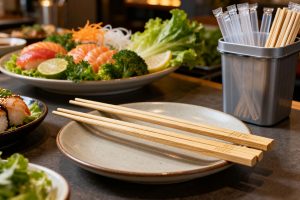70% of importers report quality issues with first-time cutlery orders - learn how to identify truly reliable suppliers.
Top-tier Chinese cutlery suppliers hold FSC/BRC certifications, maintain vertical integration from raw bamboo to finished packaging, and provide material traceability documents - crucial for passing Western food safety audits.
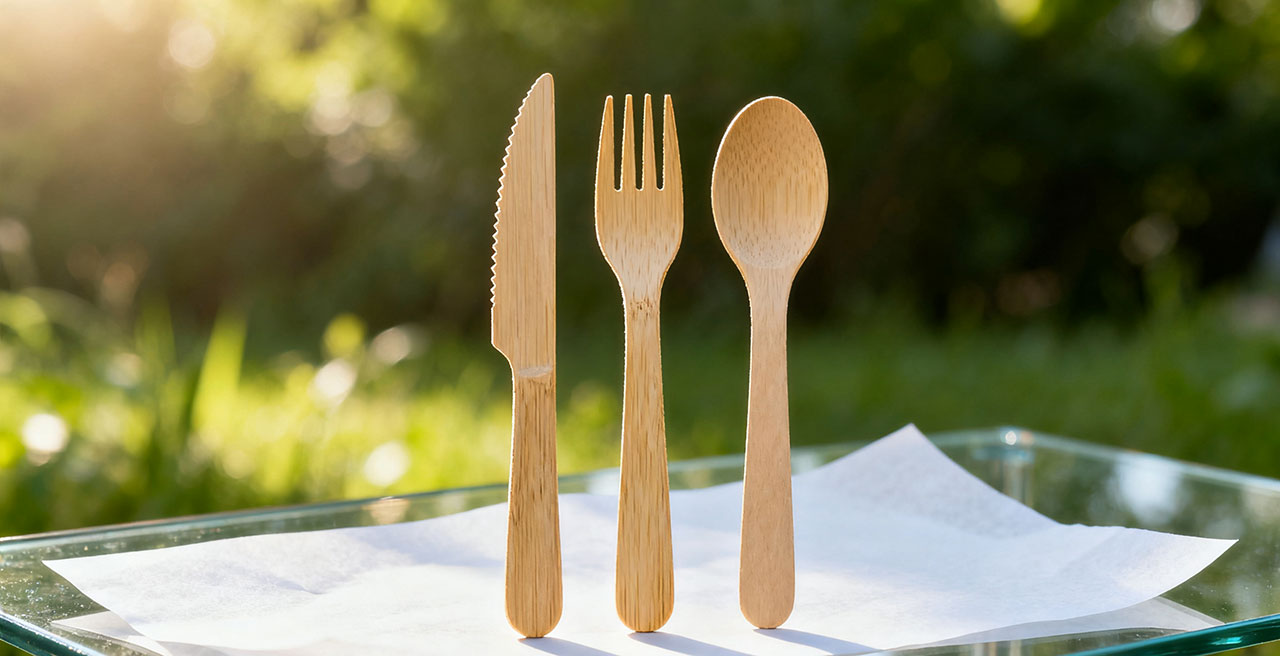
Beyond basic credentials, these key factors separate premium suppliers from risky trading companies.
Why Should Importers Choose Disposable Cutlery Over Reusable Options?
Restaurants waste $3,800 annually per location on reusable cutlery losses - discover when disposables deliver superior economics.
Disposable cutlery1 eliminates 92% of washing costs, reduces cross-contamination risks in healthcare settings, and proves cheaper for operations serving >2,000 meals/week where labor exceeds $15/hour.
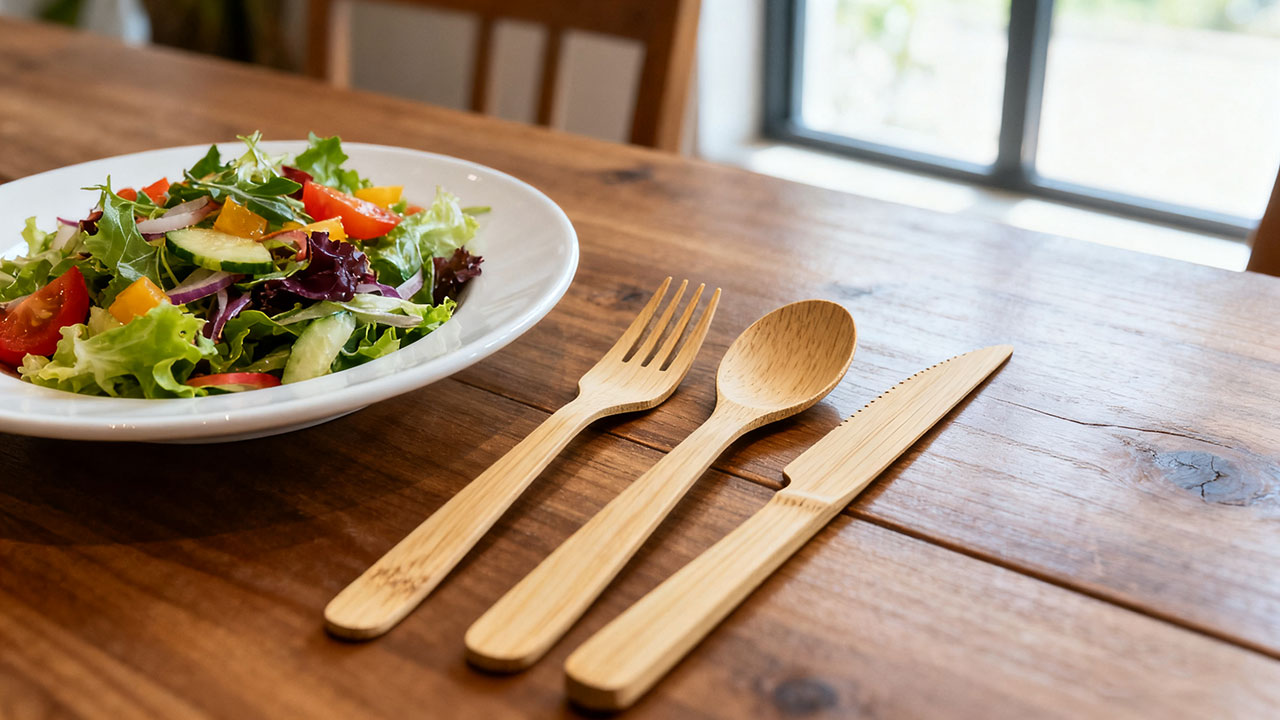
Cost Comparison: Disposable vs Reusable (300-Seat Restaurant)
| Expense Category | Reusable (Annual) | Disposable (Annual) | Savings |
|---|---|---|---|
| Purchase Cost | $2,100 | $3,400 | -$1,300 |
| Washing Labor | $28,500 | $0 | +$28,500 |
| Water/Detergent | $3,200 | $0 | +$3,200 |
| Replacement | $1,800 (15% loss) | $0 | +$1,800 |
| Waste Removal | $0 | $950 | -$950 |
| Total | $35,600 | $4,350 | $31,250 |
- Hygiene: No biofilm risk from improper washing
- Convenience: Eliminates sorting/storage space
- Customization: Branding on every utensil
- Regulatory Compliance: Meets FDA 21CFR175.300 for food contact
What Materials Are Best for Eco-Friendly Disposable Cutlery?
Not all "green" cutlery degrades as promised - material science reveals which options actually decompose in commercial facilities.
Bamboo cutlery (90-day compostability) outperforms PLA plastics (requires industrial composting) and untreated wood (variable durability), with food-grade resin coatings maintaining ASTM D6400 compliance while preventing moisture warping.
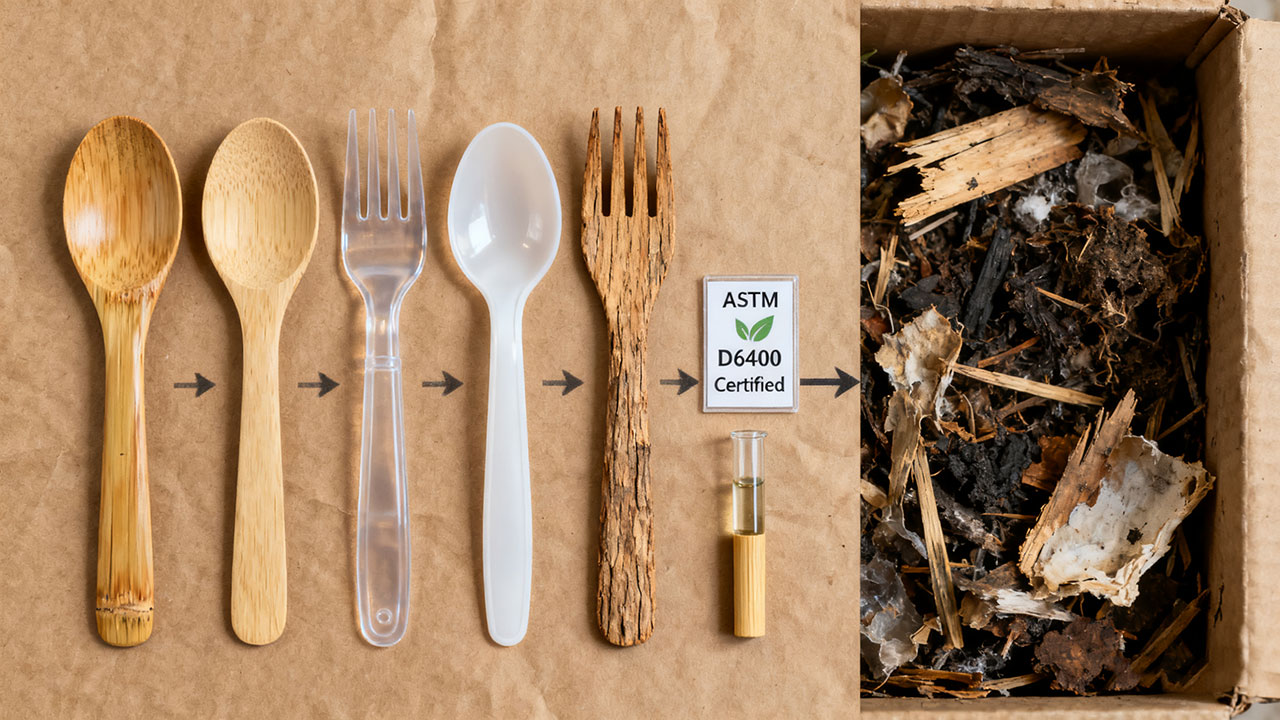
Material Performance Matrix
| Characteristic | Bamboo | PLA | Birch Wood | Palm Leaf |
|---|---|---|---|---|
| Compost Time | 90 days | 180* days | 120 days | 150 days |
| Oil Resistance | ★★★★☆ | ★★★☆☆ | ★★☆☆☆ | ★★★★★ |
| Max Temp | 80°C | 55°C | 65°C | 95°C |
| Flex Strength | 280 MPa | 60 MPa | 50 MPa | 85 MPa |
| Certifications | FSC, OK Compost | BPI, EN13432 | PEFC, FDA | ASTM D6868 |
Cutting-Edge Options:
- Coffee Ground Composites: 40% post-brew waste content
- Wheat Straw-Based: Uses agricultural byproducts
- Seaweed Derivatives: Marine-degradable within 6 weeks
- Nano-Cellulose: Enhanced strength with thin profiles
What Packaging Solutions Are Available for Bulk Disposable Cutlery Orders?
Poor packaging destroys 17% of cutlery shipments - these innovative solutions protect quality while minimizing waste.
High-density kraft paper rolls (1,000 pieces/roll) reduce damage by 73% compared to loose packing, while vacuum-sealed PE bags with oxygen absorbers extend shelf life to 36 months for pre-sterilized items.
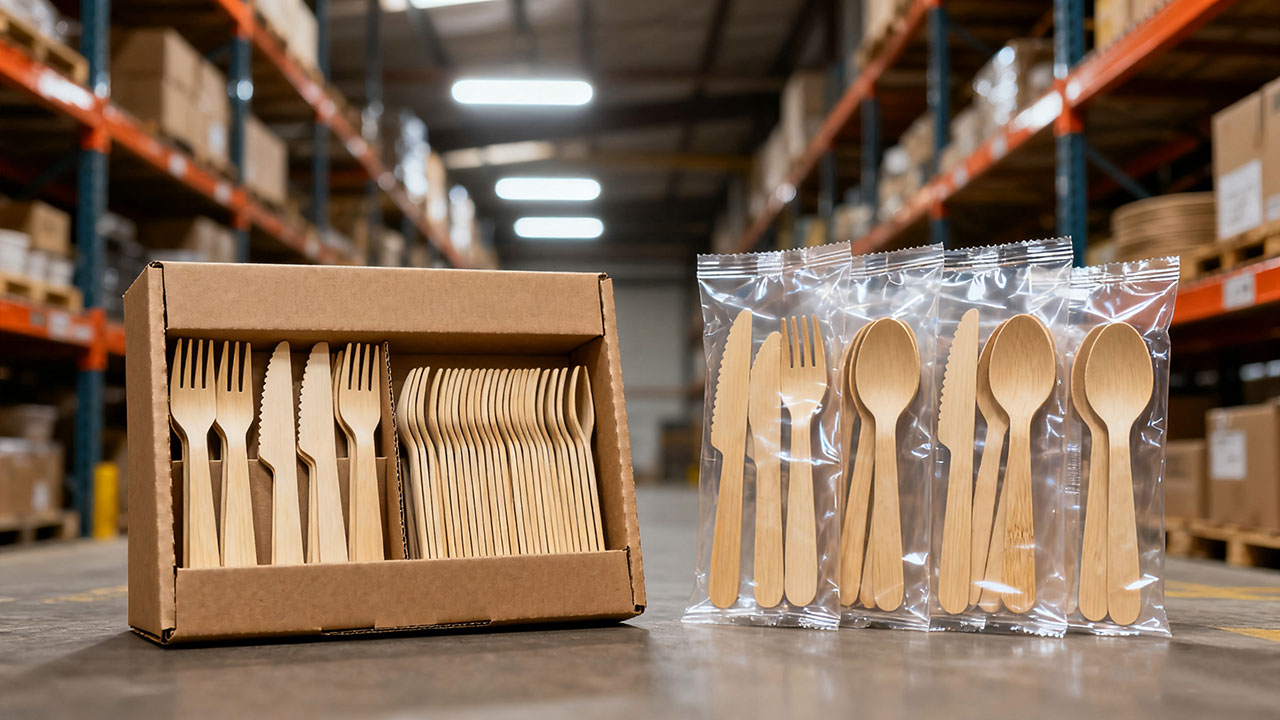
Packaging Options Comparison (Per 10,000 Pieces)
| Format | Protection | Volume | Sustainability | Cost |
|---|---|---|---|---|
| Kraft Rolls | ★★★★☆ | 3.2 CBM | Recyclable | $185 |
| PET Clamshells | ★★★★★ | 5.1 CBM | Partly Recyclable | $420 |
| Loose in Carton | ★★☆☆☆ | 2.8 CBM | Recyclable | $110 |
| Vacuum Bags | ★★★★☆ | 2.1 CBM | Non-Recyclable | $290 |
| Biodegradable Film | ★★★☆☆ | 3.5 CBM | Compostable | $380 |
- Mushroom Mycelium: Grown-to-fit protective trays
- Water-Soluble Bands: Dissolve during dishwashing
- Smart Labels: Color-change moisture indicators
- Returnable Racks: Collapsible metal frames for reuse
For High-Volume Buyers:
- Direct palletization with corner protectors
- Custom divider inserts for mixed SKUs
- RFID-tagged bundles for inventory tracking
- Humidity-controlled container liners
Conclusion
Selecting premium cutlery suppliers requires verifying material authenticity, composting certifications, and damage-proof packaging systems - critical for profitable bulk imports.
---
References
- 1. Explore the economic and hygiene advantages of disposable cutlery for your business. ↩



